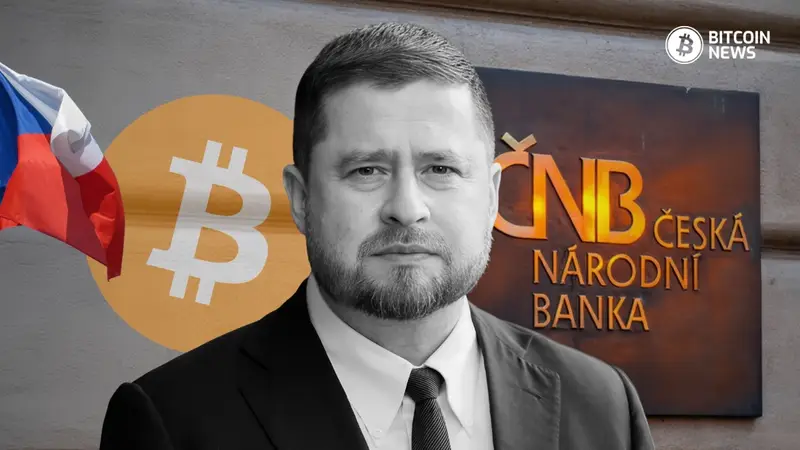Key Takeaways
- Czech National Bank created a $1M test portfolio with bitcoin and other digital assets to study blockchain in practice.
- The project is experimental, not an investment, and won’t affect the koruna or monetary policy.
- CNB aims to learn how digital assets could reshape payments, reserves, and financial systems in the future.
The Czech National Bank has done what no other European central bank has done yet — it bought bitcoin. The bank has created a small, $1-million “test portfolio” of digital assets to learn how they work in practice.
This portfolio includes: Bitcoin, a U.S. dollar–based stablecoin, and a tokenized deposit. The bank highlighted that this is part of an experiment, not an investment. According to the CNB, it wants to learn about blockchain technology and the possible implications on the future of finance.
“The aim was to test decentralised Bitcoin from the central bank’s perspective and to evaluate its potential role in diversifying our reserves,” CNB Governor Aleš Michl explained. “We’ll inform the public about our experience on an ongoing basis and present an assessment in two to three years.”


The bank made it clear that this move does not change its main financial policies. The digital assets are held outside the official reserves of the Czech Republic, and therefore cannot affect the value of the national currency, the koruna, or how the bank controls inflation.
“The koruna is our legal tender,” Michl said. “The Czech National Bank will continue to keep inflation low and the koruna strong. But new ways of paying and investing will emerge rapidly in the years ahead. As a central bank, we want to test this path.”
The project, approved on October 30, 2025, will last for two to three years. During that time, the CNB will study key parts of bitcoin management: how to store it safely, how to approve transactions, how to handle security risks, and how to adhere to anti–money-laundering laws.
Related: Czech Republic Introduces Tax-Free Rules for Long-Term Bitcoin Holders
In this sense, a “sandbox” is a safe environment where the bank can experiment and learn without taking actual financial risks.
The $1 million purchase is minuscule for a central bank – it’s only about 0.0006% of the CNB’s total assets. But it is a historic step nonetheless. It’s the first time bitcoin has appeared on a central bank’s balance sheet in the European Union.
Central banks avoid bitcoin due to its volatility and blurry regulatory environment, but according to the CNB, it wants to understand it, not ignore it. According to the bank, tokenization, digital payments, and new fintech could completely change the concept of money in the future.
In its statement, the CNB said, “The purpose is to gain practical experience with technologies that may fundamentally affect the operation of the financial and payment system in the future.”
Governor Michl first floated the idea of bitcoin purchases in January 2025. Skeptics such as European Central Bank President Christine Lagarde opposed the plan. However, the Czech Republic’s central bank is independent, having not joined the Eurozone.
The CNB, as part of the experiment, will test “the whole chain of processes” – from buying and holding bitcoin to managing digital keys and dealing with emergencies. It will also study how to account for and audit these assets safely.
“As a central bank, we want to test this path,” Michl said.

